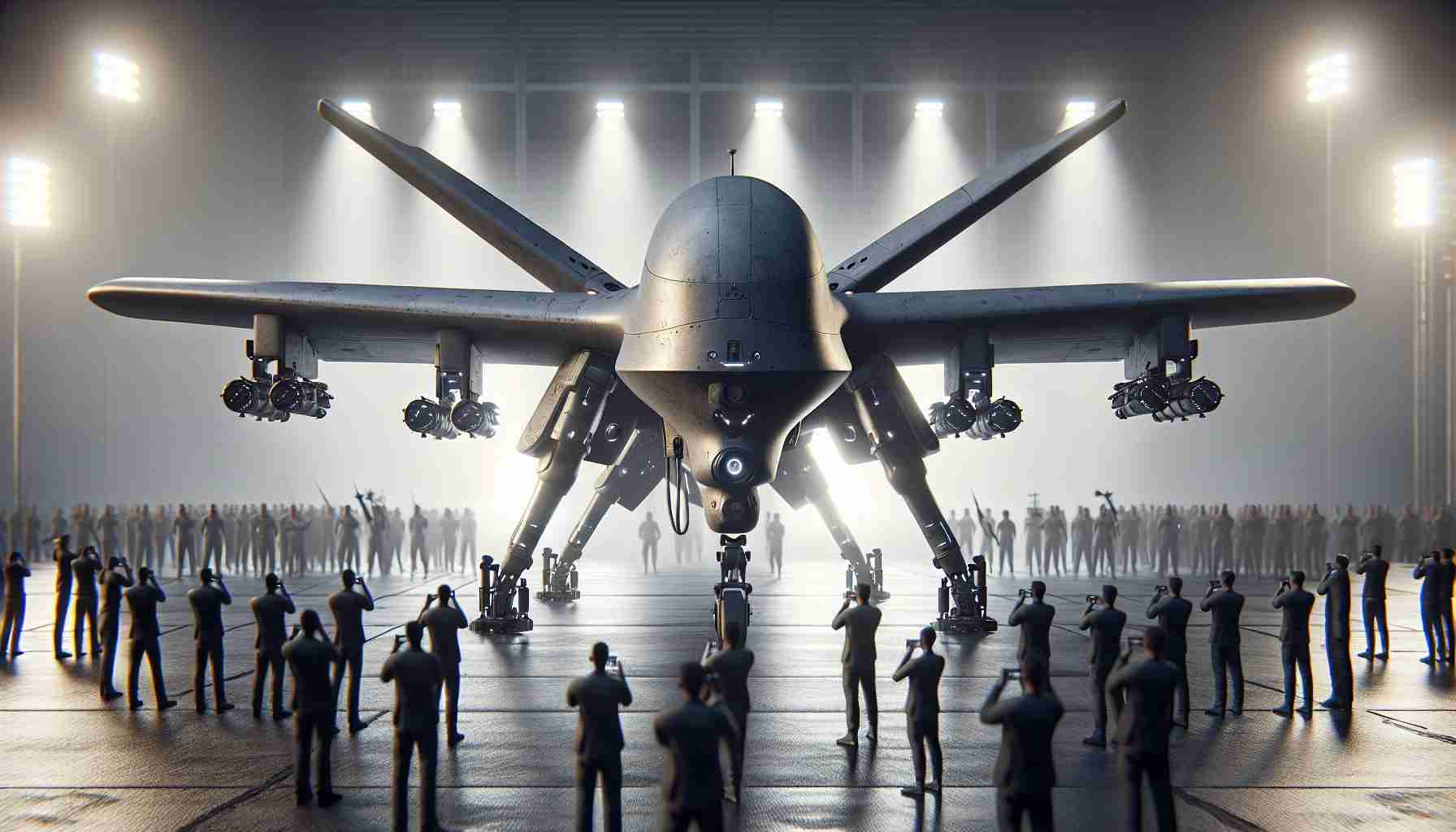- Kalashnikov Concern is unveiling its first unmanned aerial vehicles (UAVs) at IDEX 2025 in Abu Dhabi.
- Two new drones, the Goliath-R and Karakurt-R, emphasize versatility for military applications.
- These UAVs are designed for multiple missions, including search and rescue and intelligence gathering.
- The Goliath-R excels in urban environments, while the compact Karakurt-R is suitable for rapid deployments.
- Kalashnikov’s Quazimachta platform provides advanced surveillance capabilities with continuous data transmission.
- This unveiling highlights a strategic shift towards unmanned combat and reconnaissance systems in modern warfare.
As the global defense landscape evolves, Kalashnikov Concern, the powerhouse behind the iconic AK-47, is making waves by revealing its first-ever unmanned aerial vehicles (UAVs) at the upcoming International Defence Exhibition & Conference (IDEX) 2025 in Abu Dhabi from February 17 to 21. This event, known for its vast influence on the defense industry, will showcase approximately 20 Russian defense firms alongside Kalashnikov’s groundbreaking drone technology.
Introducing the Goliath-R and Karakurt-R, both vertical take-off and landing UAVs, Kalashnikov promises systems honed through intensive battlefield testing in Ukraine. These drones are not just about firepower; they excel in versatility, designed for search and rescue, intelligence gathering, and security monitoring. The Goliath-R can effectively navigate urban terrains, while the compact Karakurt-R is agile enough to be launched from tight spaces, making it a perfect fit for urgent military operations.
Additionally, Kalashnikov will demonstrate its Quazimachta platform, ideal for long-duration electronic payload operations. Offering round-the-clock capabilities in both optical and infrared spectrums, it ensures continuous surveillance and real-time data transmission, crucial for modern warfare.
This showcase isn’t just a demonstration; it’s a strategic push to elevate Kalashnikov’s status in unmanned combat and reconnaissance systems, reflecting the broader shift in military technology reliance. As they gear up for IDEX 2025, the spotlight is on these cutting-edge UAVs, promising to change the game of defense technology on the global stage.
Key takeaway: Kalashnikov is redefining aerial warfare with its innovative drones, setting the stage for the future of modern defense.
Kalashnikov’s Drones: The Future of Aerial Warfare
As the global defense landscape evolves, Kalashnikov Concern is making significant strides with its first-ever unmanned aerial vehicles (UAVs) showcased at the International Defence Exhibition & Conference (IDEX) 2025 in Abu Dhabi. This event, notable for its impact on the defense industry, will feature Kalashnikov alongside approximately 20 other Russian defense companies, highlighting its innovative drone technology.
New Drone Models
Kalashnikov is introducing two pioneering vertical take-off and landing UAVs: the Goliath-R and Karakurt-R. These drones are not only equipped for combat but also versatile enough for tasks such as search and rescue, intelligence gathering, and security monitoring. The Goliath-R is particularly adept in urban environments, while the smaller Karakurt-R is designed for agile deployment in constrained spaces, making it optimal for rapid military operations.
In addition, Kalashnikov is set to showcase the Quazimachta platform, designed for extensive electronic payload missions. This platform is capable of continuous surveillance, operating in both optical and infrared spectrums, and ensuring uninterrupted data transmission—vital for modern warfare tactics.
Key Innovations and Trends
Kalashnikov’s entry into the UAV market reflects a larger trend within military technology, where reliance on unmanned systems continues to rise. The development of such drones marks a distinct shift in defense strategies, emphasizing the importance of aerial reconnaissance and combat capabilities.
Market Forecast: The UAV market is projected to grow significantly over the next decade, driven by advancements in technology and increasing military expenditures globally.
Most Important Questions
1. What are the primary applications of Kalashnikov’s new drones?
Kalashnikov’s drones are designed for various applications, including combat operations, intelligence gathering, surveillance, and search and rescue missions. Their adaptability makes them suitable for both military and defense-related civilian purposes.
2. How do Kalashnikov’s UAVs compare to existing drone technologies?
Kalashnikov’s UAVs feature unique capabilities such as urban navigation and compact design for launch from confined spaces, which sets them apart from many current drone technologies. This innovation could establish new benchmarks in drone operational flexibility and efficiency.
3. What implications do these UAVs have for future warfare?
The introduction of advanced UAVs like those from Kalashnikov signifies an important evolution in warfare. Their ability to conduct real-time intelligence and combat operations without direct human involvement enhances strategic military advantages, indicating a future where unmanned systems play pivotal roles in conflicts.
Insights and Limitations
While Kalashnikov aims to position its UAVs at the forefront of modern defense technology, potential limitations in operational range, payload capacity, and air defense countermeasure effectiveness could impact their overall utility. Monitoring and addressing these dimensions will be crucial for maximizing their capabilities in the field.
Conclusion
Kalashnikov is poised to transform aerial warfare with its innovative UAV technology, marking a new era in military defense systems. The upcoming demonstrations at IDEX 2025 will be pivotal for establishing their drones’ prominence in the global defense market.
For more details about Kalashnikov and its innovations, visit Kalashnikov Concern.




















